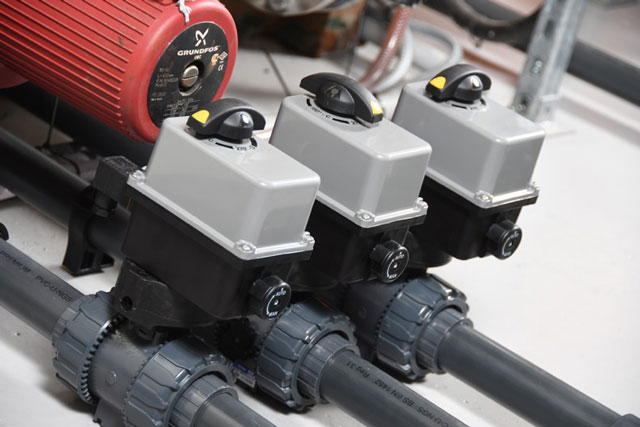
The summer shutdown season is upon us, and many industrial and wastewater processing facilities are receiving their annual inspection and maintenance programme. Fraser Higgins, Durapipe UK industrial product manager says that particular, which are integral to the successful operation of such plants, should not be overlooked. Here is the Durapipe team’s list of the annual checks and considerations that should be made.
Leakage
The first check should always be to see if there are any leaks in the valve. Initial indications could be when build-up on the ends of the valve or around the handle can be seen. Any deposits, even if they are believed to be dirt, should be thoroughly checked. Remove the valve and inspect the seals, which are the most vulnerable areas. It may be possible to replace the seals, but consider replacing the valve with one that has an increased number of seals, offering increased protection.
Valve movement
Movement within a valve can contribute to leakage. The key area susceptible to movement is around the union nuts, which can become loose if there is aggressive vibration in the system. These can be re-tightened to the correct position, but if the problem recurs, changing to a valve with a locking mechanism for the nuts should be considered.
Process changes
Changes in the process, such as to temperature, pressure or acidity, since the system was originally specified can significantly affect the integrity of the system, and place stress on the component parts. Manufacturers’ technical support teams should always be consulted to provide advice on the most appropriate valves.
Blockages
Frequent jamming of ball valves could be due to sediment in a process. To address this without needing to replace the valve, fit sediment strainers into the line. To avoid adding new elements into the process, ball valves can be replaced with diaphragm valves, which work by a rubber seal closing the valve, and are less likely to become blocked.
Flow Control
The planned summer shutdown is the ideal time to look at the control of flow in a system and whether the required flow is being achieved. Ball valves are the most commonly installed to control flow but have limitations in accuracy. If accurate flow regulation is required, a simple change to a metering ball valve with a graduated positioning indicator will meet the requirements.
Actuation
Increasingly, industrial processes require valves to be operated remotely, but this does not mean the existing valves need to be replaced. Actuators can be retrofitted to existing valves, minimising disruption to plant operation.
Compliance
Finally, it is paramount to check the products still meet legislation, which may have changed or been updated since the system was installed. This is of particular importance in water treatment applications, where utility companies are tightening the requirements on what can be put back into the water system. The discharge of trade effluent into the public sewer system is governed by the Water Industry Act 1991, with individual water utilities setting the legal limits within their area. It is a criminal offence to breach these limits.
To ensure compliance, in-line pH, conductivity, and ORP (redox) measurement devices can be installed. These can be simply introduced into an existing system by using an installation tee or a clamp saddle, depending on pipe size. For processes that already have them, it is important to check that there is no corrosion, that software is up to date and that they have been programmed correctly.
The Durapipe Flow Team can advise on the most suitable valves for specific applications, with the specialist valve department able to quote, build, test and despatch many valves within 48 hours.
For further information visit www.durapipe.co.uk or email valves@durapipe.co.uk.

